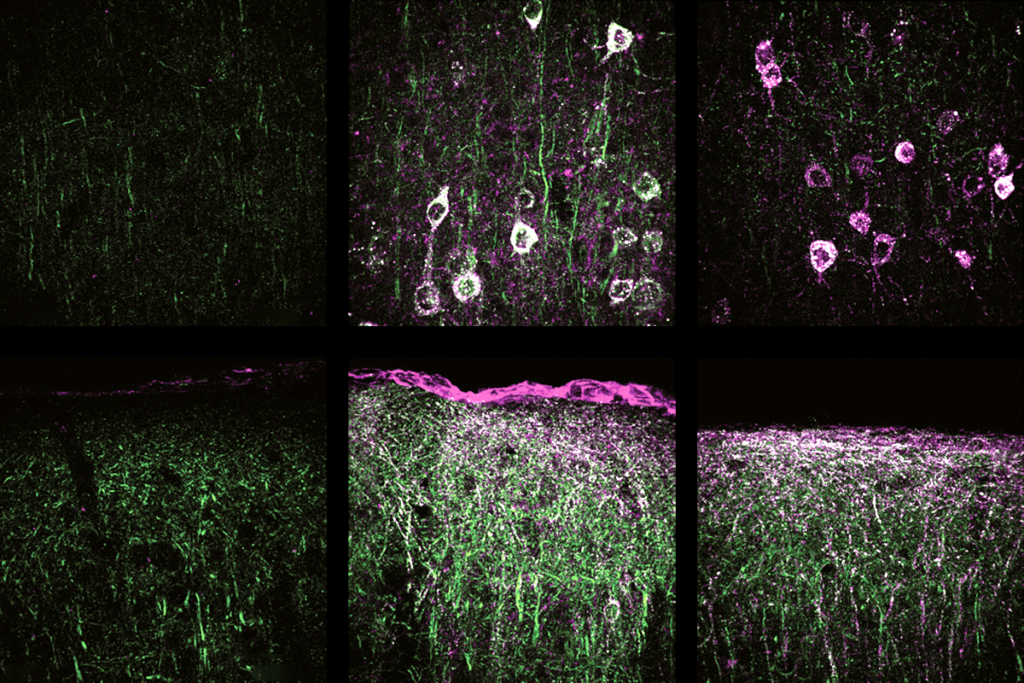Autism’s rise tracks with drop in other childhood disorders
The latest estimate of autism prevalence suggests the condition is more common than previously thought, and highlights the complexity in the seemingly simple statistic.
The latest estimate of autism prevalence in the U.S., released last week, suggests the condition is even more common than previously thought. But the apparent rise in autism coincides with a decline in other developmental disorders, highlighting the complexity folded into this seemingly simple statistic.
The U.S. Centers for Disease Control and Prevention (CDC) estimates that 1 in 45 children have autism, up from 1 in 80 in 20131. The new figure is based on the annual door-to-door National Health Interview Survey, which asks parents whether a doctor has ever told them their child has autism, intellectual disability or another type of developmental delay.
The survey that yielded the 2013 estimate first asked parents whether their child has intellectual disability and then about other developmental delays. Parents then completed a checklist that inquired whether their child had any of 10 health conditions, including autism.
The resulting prevalence estimate was lower than two others the CDC calculated using different methods: a 2014 examination of medical and educational records, which yielded the widely cited 1 in 68 statistic, and a 2013 telephone survey of parents, which reported that 1 in 50 children in the U.S., or 2 percent, have autism.
To better align these estimates, CDC scientists modified the wording and format of their survey in a way they thought might capture more children with autism. Instead of including the condition in a checklist, they inserted a question about autism right after the one about intellectual disability.
Alternative analyses:
The tweaks caused a drop in the number of parents who reported that their child has developmental delays, and a rise in the number reporting autism. Yet the total number of children with autism, intellectual disability or other developmental delay did not change. This stable statistic suggests that the uptick in autism stems in part from the reshuffling of children among these diagnostic groups.
“We’ve seen that for years now,” says Eric Fombonne, director of the Autism Research Center at Oregon Health and Science University, who was not involved in the survey. “This is a beautiful example of it.”
A study published in October reported a similar trend (see line graph). Researchers led by Santhosh Girirajan calculated that roughly 64 percent of the reported increase in autism prevalence can be attributed to a decrease in intellectual disability rates2.
“It is really difficult to estimate an accurate prevalence, because autism occurs along with other disorders,” says Girirajan, assistant professor of biochemistry and molecular biology at Penn State University.
Similarly, a 2009 study of autism prevalence in California reported that 26 percent of the increase in rates between 1992 and 2005 was due to changes in diagnostic practices3.
The changes to the survey used to derive the latest CDC estimate up the autism prevalence to 2.24 percent, putting it more in line with other recent CDC estimates. It also jibes with a reported rate of 2.6 percent in South Korea, as estimated in a 2011 study.
“The numbers seem to be converging on around 2 percent or so,” says Maureen Durkin, professor of population health sciences and pediatrics at the University of Wisconsin-Madison, who leads the CDC’s records-based prevalence monitoring site in Wisconsin. “It’s a lot more common than we thought.”
Subjective sorting:
The exact true prevalence is hard to determine.
“I don’t think we’ll ever get a handle on that,” Fombonne says. Asking for a true estimate may not even be the right question, he adds.
Prevalence studies should aim to capture more biological information about each child, he says. “For instance, it would be nice if these surveys could sample the household for particular household compounds. That would be a wonderful development.”
Girirajan adds that information about a child’s genetic risk factors for autism could help researchers sort children for prevalence estimates based on genetic causes, rather than behavioral diagnoses.
Ultimately, what matters is that children with autism are getting the support they need. “I think that’s the next burning question,” Durkin says.
Understanding how well each child functions in everyday life is important for making sure schools and clinics are providing adequate services to children with autism, Durkin says. “We have to make sure services are going to the kids who really need them most.”
References:
Recommended reading

Autism scientists push back on CDC’s inaccurate vaccine claims

Gene replacement therapy normalizes some traits in SYNGAP1 model mice
Explore more from The Transmitter

Neurophysiology data-sharing system faces funding cliff

